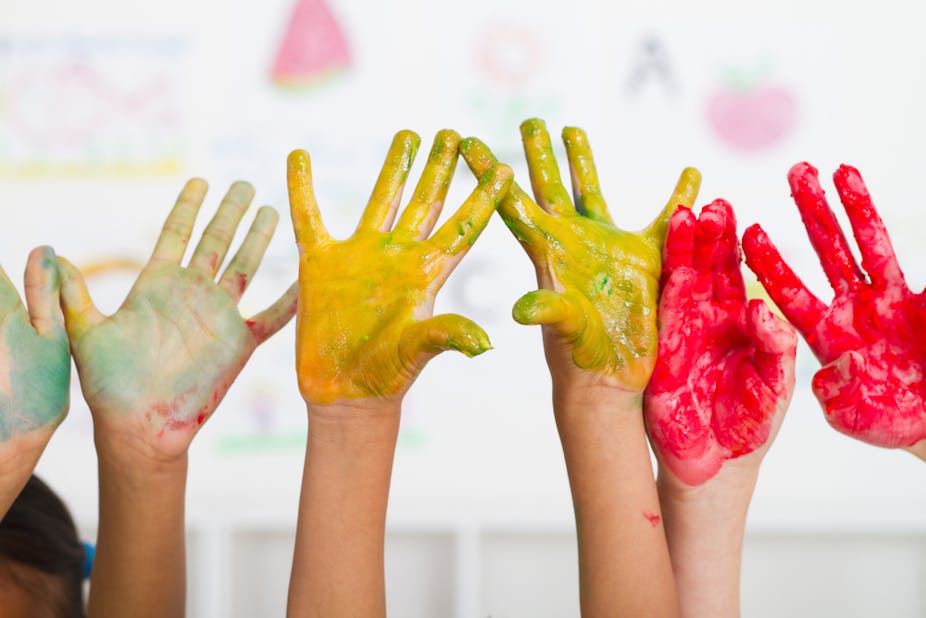Labour has made a move to put creativity back at the centre of the education agenda in the lead-up to the May general election.
In a recent speech, Ed Miliband drew attention to the reduction in arts education in primary and secondary schools and the lack of opportunities for creative subjects that had been squeezed out by the education reforms of the former Conservative education secretary, Michael Gove. He said:
If you believe in social justice, if you believe in a more equal society, the access to the arts and culture is not an optional extra, it is essential – not simply because of the worlds it opens up, but because of the wider impact it has.
Under Miliband’s proposal, Ofsted would look at “creativity” within its inspection regime. Schools would only be able to achieve an outstanding grade if they offered a broad and balanced curriculum, including the arts and cultural subjects. Contrast that with the Conservatives’ emphasis on expanding the free school and academies programme and the current secretary of state Nicky Morgan’s insistence on times tables and rote learning, and there are clear positions being taken here on the election battleground.
Creativity vs McDonald’s
The current debate about the role of the arts, culture and creativity in schools is not new. Ken Robinson’s game-changing 2009 book The Element begins with a story of a girl who didn’t “fit” into school. This girl goes on to become a world-renowned choreographer through the intervention of local GP who identifies her as a “dancer” and in need of a ballet school rather than her local primary school.
Robinson, particularly through his engaging TED talks, has stressed the importance of creativity in developing young children and counter-posed this against “traditional” forms of schooling. He puts forward a view of schools where the personal talents of children and young people are valued above standardised testing regimes, which he argues is a throw back to an industrial age of factory production lines and therefore inappropriate to the needs of the 21st century.
His argument is not unique. Organisations such as Cambridge Primary Review Trust and the Slow Education movement (started by a teacher at Eton School) have emphasised the importance of enabling all children to fulfil their potential (whatever that might be) and to develop their aptitudes and talents. This is often counter-posed against a system of education currently structured by exams, assessments and measurement – likened to a MacDonald’s system of schooling.
Value to the economy
So creativity is now an important element in debates around the role that schools and the curriculum play in equipping young people for the demands of the 21st century. But also in the role of the arts and creative industries in the broader economy.
According to the government’s own statistics released in January this year, while the return to job creation has been slow overall, the creative industries have bucked the trend, contributing over £76 billion to the economy while continuing to create jobs at a rate significantly above the rest of the UK. These government estimates show a rosy picture for this sector with rising employment rates, expanding exports and a significant contribution to the economy.

Alongside the government’s economic analysis of the role of creative industries, the University of Warwick, Ken Robinson’s alma mater, launched the report Enriching Britain, Culture, Creativity and Growth in February. Again, the arts in the widest sense was emphasised as being key to both the economic prosperity of the country and the way of ensuring a 21st century approach to education.
In an election campaign too close to call, it may be that Labour’s emphasis on the arts, creativity and culture will mark clear blue water between them and the other political parties. Labour does have a history of putting forward arts and culture as key elements of a broad and balanced curriculum for children. In the heady early days of the last Labour government, the 1997 white paper Excellence in Schools stated:
If we are to prepare successfully for the 21st century we will have to more than just improve literacy and numeracy skills. We need a broad, flexible and motivating education that recognises the different talents of all children and delivers excellence for everyone.
Creative use of creativity
But we need to be wary of seeing “creativity” as an answer to all the nation’s education and economic ills. A critical article by educationalist Howard Gibson from ten years ago raised the stakes around romantic notions of bygone eras that have informed some of the debates around creativity and the arts. In What creativity isn’t, Gibson challenged the different definitions of “creative” and the way it is used to justify different and sometimes contradictory views.
Creativity, then, seems to be another of those ill-defined terms. Some use it to attack the centralising tendencies of the government. Some see it in terms of personal identity and self-expression. Others use it to describe a sort of life-style.
Given Gibson’s critique of the way “creativity” can be loosely defined and sometimes all things to all people, it’s no wonder that Miliband’s notion of creativity is one where the arts and culture act as a lever for tackling inequality. We should contrast that with the Conservatives’ emphasis on different types of schools and the expansion of academies and free schools and literacy and numeracy. But there is still time for the creativity debate to begin shaping the election campaign.

